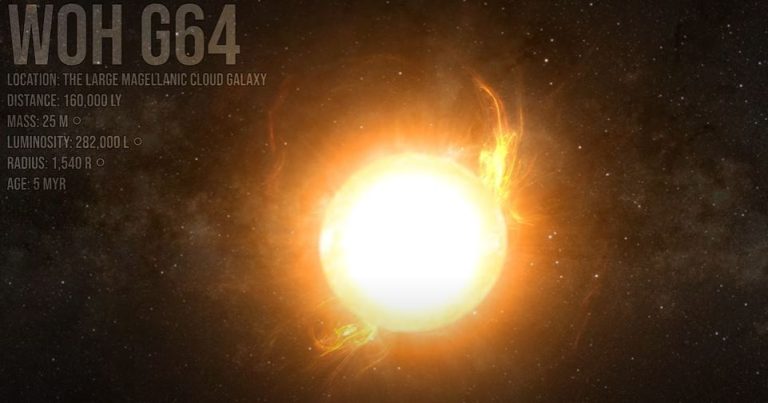Understanding the largest Stars known to man
Introduction
The universe, with its vast expanse and countless wonders, never ceases to amaze us. Among its most fascinating inhabitants are stars, celestial bodies that have captivated human imagination for millennia. In this exploration, we delve into the awe-inspiring realm of stars, focusing particularly on the quest to identify the largest star in the universe.
A Glance at the Cosmos
Stars, those luminous spheres of plasma held together by gravity, serve as the building blocks of galaxies, including our own Milky Way. From the moment of their formation in vast molecular clouds to their eventual demise, stars play pivotal roles in shaping the cosmos.
Formation and Evolution
Stars are born within dense regions of interstellar gas and dust known as molecular clouds. Gravitational forces cause these clouds to collapse, triggering the formation of protostars. As these protostars gather mass, they ignite nuclear fusion reactions in their cores, marking the birth of a new star.
Over billions of years, stars undergo various stages of evolution dictated by their mass. Low-mass stars like our Sun eventually evolve into red giants before shedding their outer layers to form planetary nebulae. High-mass stars, on the other hand, culminate their lives in spectacular supernova explosions, leaving behind remnants such as neutron stars or black holes.
The Quest for Size: Unraveling the Universe’s Giants
Understanding Stellar Size
When we talk about the size of a star, we typically refer to its radius or volume. While mass provides an indication of the amount of matter within a star, size gives us insight into its physical dimensions. Stars come in a vast array of sizes, from diminutive dwarfs to colossal giants.
Exploring the Largest Stars
Bât 99-98: A Massive Behemoth

Among the largest stars known to us is Bât 99-98, boasting a staggering mass of 226 times that of our Sun. This massive star, believed to be the result of a merger between two progenitor stars, shines brightly in the cosmic tapestry. However, its immense mass does not necessarily translate to extraordinary size, as its radius pales in comparison to other stellar giants.
UY Scuti: A Once-Touted Titan

Initially hailed as the largest star by physical size, UY Scuti garnered attention with its purported radius of 1,700 times that of the Sun. However, subsequent measurements revealed a more modest size of 775 solar radii, relegating it from its former glory. Despite this setback, UY Scuti remains a colossal presence in the universe, offering insights into the diversity of stellar phenomena.
Stevenson 2-18: A Question of Measurement

Stevenson 2-18 emerged as another contender for the title of the largest star, with estimates suggesting a radius of 2,150 times that of the Sun. However, uncertainties surrounding its distance from Earth cast doubt on its true dimensions. While theoretical limits constrain the maximum size of stars, the enigmatic nature of Stevenson 2-18 underscores the complexities of stellar measurement.
The Reigning Champion: WOH G64

Amidst the debate over stellar superlatives, one star has emerged as a potential frontrunner for the title of the largest in the known universe: WOH G64. This red supergiant, located in the Large Magellanic Cloud, boasts an estimated radius of 1,540 solar radii, surpassing many of its celestial counterparts. The WOH G65 is the current largest Stars known to man and not UY Scuti.
An Enigmatic Giant
Woven into the fabric of the cosmos, WOH G64 exudes an aura of mystery, shrouded in swirling clouds of dust and gas. Its colossal size not only defies conventional measurement but also hints at the profound forces shaping the universe. As astronomers continue to unravel the secrets of WOH G64, they glimpse the boundless wonders that await discovery.
The Limitations of Measurement
Challenges in Stellar Sizing
Measuring the size of stars, especially those of gargantuan proportions, presents numerous challenges for astronomers. Factors such as distance, atmospheric conditions, and observational techniques can introduce uncertainties into size estimates. Additionally, the dynamic nature of stars, with their evolving structures and emissions, further complicates the task of precise measurement.
A Quote to Ponder
“The universe is full of magical things patiently waiting for our wits to grow sharper.” – Eden Phillpotts
Advancements in Observational Techniques
Despite these challenges, astronomers continue to refine their methods for sizing stars, leveraging advancements in technology and computational modeling. High-resolution imaging, spectroscopy, and interferometry offer new insights into the intricacies of stellar dimensions. By combining data from ground-based observatories and space telescopes, researchers strive to unravel the mysteries of the cosmos.
Conclusion: Illuminating the Cosmic Tapestry
In our quest to understand the universe, stars stand as beacons of light amidst the vast darkness. From the smallest dwarfs to the mightiest giants, each star holds a unique story, waiting to be told. While the search for the largest star in the universe may elude definitive resolution, it fuels our curiosity and drives us to explore the furthest reaches of space.
As we gaze upon the heavens, let us marvel at the splendor of the cosmos and embrace the wonders that lie beyond our imagination. In the words of Carl Sagan, “Somewhere, something incredible is waiting to be known.”

